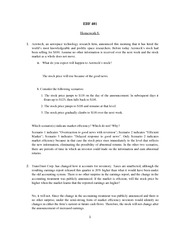
In addition to core accounting capabilities, it has robust reporting and transaction tracking tools, invoicing capabilities, inventory management features and mobile app functionality. Gathering the bank statement and transactions is the initial step in reconciling a bank adjusted ebitda calculation statement in QuickBooks, enabling the comprehensive matching of financial data with the official bank records. This helps to verify the accuracy of the recorded transactions and identify any discrepancies between the company’s books and the actual bank statement.
Reconciling Bank Accounts in QuickBooks
If you find one, then you should contact the vendor or employee to see if the check has been received. If it hasn’t, you need to void the check and reissue a new https://www.business-accounting.net/accountant-help-how-can-an-accountant-help-with/ one to the payee. The QuickBooks reconciliation screen contains a summary of cleared transactions at the top and a detailed list of transactions at the bottom.
Start From the Beginning

Let me help you regarding your deleted reconciled entries inside QuickBooks Online (QBO). Impact on your credit may vary, as credit scores are independently determined by credit bureaus based on a number of factors including the financial decisions you make with other financial services organizations. Phone and chat support, plus a dedicated account representative in all plans. Stay in touch with clients through the FreshBooks mobile app and get notified when invoices have been viewed or become overdue. Karrin Sehmbi is a lead content management specialist on the small-business team. She has more than a decade of editorial experience in the fields of educational publishing, content marketing and medical news.

More than software. Learn how to grow your business.

Verify that all transactions on your statement have been matched to QuickBooks. Add any transactions that are missing from QuickBooks by clicking the green Finish later button and entering the transactions as normal. When you’ve entered all the information from your bank statement, click the green Start reconciling button to continue. Keeping your financial records in order is hugely important to the success of your business. Read the steps you should take when closing out your small business’ books for the end of the fiscal year.
Step 2: Select the Bank Account to Reconcile
- Reconciling a bank statement in QuickBooks involves a series of steps to ensure that the recorded financial transactions align accurately with the bank statement, reflecting the true financial position.
- We’ll delve into reconciling previous months, rereconciliation, and marking transactions as reconciled in QuickBooks Online.
- This verification process is essential in identifying and rectifying any irregularities, providing a clear and accurate portrayal of the company’s financial standing.
- NerdWallet’s accounting software ratings favor products that are easy to use, reasonably priced, have a robust feature set and can grow with your business.
- Here’s a sample reconciliation with all of the transactions matched to a credit card statement.
When you reconcile, you compare your bank statement to what’s in QuickBooks for a specific period of time. In the end, the difference between QuickBooks and your bank accounts should be US $0.00, although processing payments can sometimes cause a small gap. You need to review your accounts in QuickBooks to make sure they match your bank and credit card statements. The reconciliation process is concluded by affirming that the closing balances match, signifying the successful alignment of the financial records with the official bank statements. Reconciling a bank statement in QuickBooks involves a series of steps to ensure that the recorded financial transactions align accurately with the bank statement, reflecting the true financial position. Entering the ending balance in QuickBooks Desktop is a critical step in the reconciliation process, ensuring that the financial records match the closing balance of the bank statement accurately.
For instance, forgetting to record automatic withdrawals in QuickBooks is a common mistake, and banks occasionally make mistakes as well. Additionally, QuickBooks Online’s bank reconciliation feature can catch any fraudulent transactions in your account. QuickBooks has built-in compatibility with time-tracking and payroll.
Reviewing transactions in QuickBooks Desktop is essential to identify any discrepancies and ensure that the recorded transactions correspond accurately with the bank statement. Reviewing transactions in QuickBooks Online is essential to identify any discrepancies and ensure that the recorded transactions correspond accurately with the bank statement. Entering the ending balance in QuickBooks Online is a crucial step in the reconciliation process, ensuring that the financial records align with the closing balance of the bank statement. Once you have your monthly bank statements, you can reconcile your accounts. You’ll compare each transaction in QuickBooks with what’s recorded on your bank statement.
These reports provide a summary of the reconciled transactions and help you review the reconciliation process and its results. Alternatively, if you want to access and review reconciliation reports without going through the reconciliation screen, you can navigate to the Reports tab in QuickBooks. Locate “Reconciliation Reports” in the report center, and QuickBooks will take you to the History by account screen. Here, you can track reconciliation history and access reports at any time. Choose the bank account you want to reconcile in QuickBooks, then enter the ending account balance and date from your bank statement. You can also add the service charge and interest earned—if they aren’t already in QuickBooks.
Once within the reconcile window, users can input the bank statement date, ending balance, and begin matching transactions. The significance of this phase lies in its ability to identify https://www.simple-accounting.org/ any discrepancies or errors, providing a clear overview of the company’s financial status. It’s recommended to reconcile your checking, savings, and credit card accounts every month.
These few accounting products fell short in our ratings rubric on a number of fronts. We recommend skipping them in your exploration of the best accounting software for small businesses, unless you can live without some key features these products lack and their price tag feels worth it to you. Least expensive plan lacks double-entry accounting reports, bank reconciliation and accountant access. The software’s mobile-first features — such as the ability to send invoices by iMessage or add widgets to your phone’s home screen to easily access timers and overdue invoices — really help set it apart, though.
